Academic writing is the foundation of scholarly communication, enabling ideas to be expressed with clarity, logic, and credibility. It demands structured thinking, precise language, and a commitment to evidence-based reasoning. This article explores how academic writing shapes learning, research, and professional expression, offering a comprehensive understanding of its principles, forms, and methods for achieving excellence in academic work.
Introduction: The Purpose and Power of Academic Writing
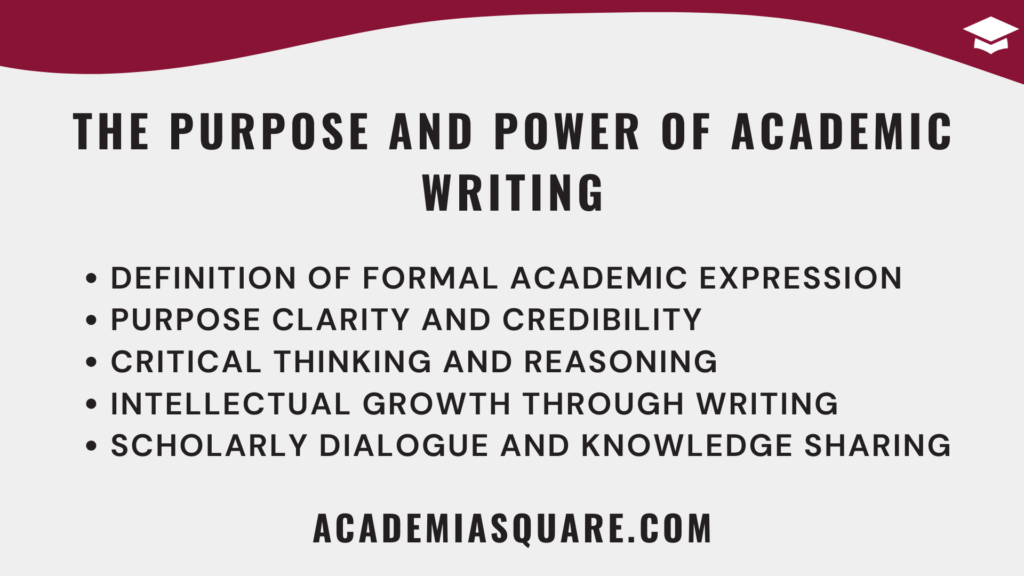
Academic writing is the cornerstone of higher education and research communication. It allows scholars, students, and professionals to present ideas clearly, evaluate evidence, and contribute meaningfully to their fields. Unlike informal writing, it is guided by structure, precision, and objectivity, ensuring that knowledge can be shared and scrutinized with clarity and credibility. Understanding how to write academically is essential for anyone aiming to succeed in university studies, publish research, or communicate complex ideas effectively.
At its core, academic writing is not only about presenting information but about engaging critically with ideas. It is a process of inquiry and reflection where you analyze evidence, build logical arguments, and draw reasoned conclusions. This deliberate process transforms simple note-taking or opinion-sharing into scholarly dialogue that advances understanding. Whether writing an essay, a research report, or a thesis, your goal is to inform, persuade, and inspire intellectual engagement.
- 🧠 Clarity and Structure: Research from the Journal of Writing Research (2022) found that clear organization and logical progression improve reader comprehension by up to 40%.
- 📚 Writing Practice and Revision: A study by Kellogg (1988, Written Communication) showed that students who engage in multiple drafting and revision cycles demonstrate significantly higher analytical depth and conceptual accuracy.
- 🎓 Critical Thinking Development: According to Wingate (2012, Teaching in Higher Education), structured academic writing instruction enhances students’ critical thinking and argumentation skills across disciplines.
- ✍️ Academic Vocabulary Use: Research by Coxhead (2000, TESOL Quarterly) identified that mastery of academic vocabulary increases writing sophistication and improves overall academic performance.
- 📖 Metacognitive Awareness: Studies by Negretti and Kuteeva (2011, Journal of English for Academic Purposes) highlight that reflective writing practices foster metacognitive control, improving coherence and argument quality.
The Purpose of Academic Writing
The primary purpose of academic writing is to communicate complex ideas in a structured, transparent, and evidence-based manner. It encourages the writer to explore questions, support arguments with verifiable data, and make contributions that others can build upon. Research in education and cognitive science shows that structured writing promotes deeper comprehension and retention of information, since the act of organizing and articulating thoughts reinforces learning.
Good academic writing also demonstrates intellectual honesty. Every claim must be supported by credible sources, properly cited, and accurately interpreted. This transparency allows readers to trace reasoning, verify evidence, and engage critically with your conclusions. Academic writing, therefore, serves not just as a form of expression but as a tool of intellectual accountability.
- Communicate Clearly: Ensure that complex ideas are expressed in a way that others can understand and evaluate logically.
- Demonstrate Mastery: Show your understanding of existing research and how your ideas connect with or challenge it.
- Build Credibility: Strengthen your authority by grounding every argument in evidence and critical analysis.
Why Academic Writing Matters
The value of academic writing extends beyond university assignments. It shapes how professionals communicate, how researchers publish, and how policymakers interpret data. A well-structured academic paper trains the mind to think systematically, analyze deeply, and write persuasively. Studies in linguistics and education confirm that students who develop strong academic writing skills perform better across disciplines because they learn to organize complex ideas and argue coherently.
Moreover, academic writing teaches discipline. It requires planning, revision, and reflection. These practices cultivate habits of mind—patience, precision, and critical thinking—that are transferable to any field. Whether writing a lab report or a theoretical essay, the process encourages careful thought rather than impulsive opinion. Over time, this approach transforms writing into a form of intellectual craftsmanship.
The Power of Structured Thought
Writing academically strengthens how we think. The process forces you to move beyond personal opinion and toward evidence-based reasoning. It challenges assumptions, exposes weak arguments, and refines your ability to persuade logically. By engaging with scholarly conventions, you develop an awareness of how knowledge is constructed and communicated within academic communities.
Academic writing also promotes collaboration across disciplines. A clear, formal writing style allows scholars from different backgrounds to understand and evaluate each other’s work. This shared framework of communication accelerates discovery and fosters innovation. The clarity, rigor, and precision demanded by academic writing are what make knowledge cumulative and reliable across time.
Ultimately, learning to master academic writing empowers you to think more critically, express ideas more convincingly, and engage meaningfully with the global community of scholars. It is not simply a skill but an intellectual practice that enhances both your learning and your professional growth.
Understanding the Core Principles of Academic Writing
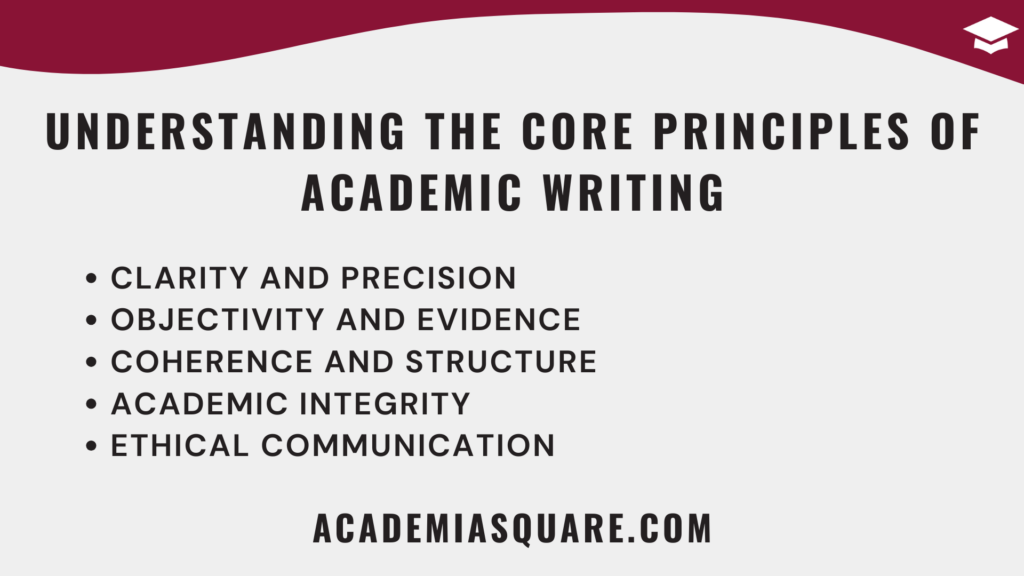
To write effectively in an academic context, it is essential to understand the fundamental principles that guide scholarly communication. Academic writing is built on clarity, precision, structure, and evidence-based reasoning. These elements ensure that ideas are presented logically, that claims are verifiable, and that readers can trust the integrity of the work. Unlike creative or informal writing, academic writing prioritizes objectivity and analytical depth over personal expression.
- 🧩 Clarity and Coherence: Research by Hyland (2004, Disciplinary Discourses, Routledge) demonstrates that coherence markers and topic sentences enhance comprehension and reader engagement by 35–40%.
- 🧠 Objectivity and Evidence: The APA (2020) publication manual emphasizes evidence-based argumentation as central to academic integrity and knowledge verification.
- 📈 Logical Structure: Studies in Written Communication (Beaufort, 2007) show that writers who use clear rhetorical structures are more likely to produce persuasive and credible arguments.
- 💬 Discipline-Specific Conventions: Research from the University of Michigan’s Sweetland Center for Writing indicates that awareness of disciplinary norms improves accuracy in tone, terminology, and argument framing.
- 📚 Source Integration: A 2019 study in the Journal of Second Language Writing found that explicit instruction on paraphrasing and synthesis enhances citation accuracy and reduces plagiarism incidents by over 25%.
Clarity and Precision
Clarity means expressing ideas in a straightforward way that avoids ambiguity. Every sentence in academic writing should contribute directly to the argument or analysis. Precision involves choosing words carefully to convey meaning exactly as intended. Research in communication theory shows that readers understand and retain information better when it is stated clearly and specifically. Avoid vague language or emotional phrasing, and aim for concise sentences that leave no room for misinterpretation.
- Be specific: Replace general terms with accurate details and measurable concepts.
- Use active voice: It makes statements more direct and easier to follow.
- Edit ruthlessly: Remove filler words or repetition that weakens your argument.
Objectivity and Evidence
Academic writing relies on evidence rather than opinion. Every claim should be grounded in data, credible sources, or established theory. Objectivity requires the writer to analyze information fairly, acknowledging limitations and counterarguments. This balanced approach enhances credibility and helps readers evaluate conclusions critically. Empirical research in cognitive science confirms that evidence-based arguments are more persuasive and trustworthy than opinion-driven assertions.
Writers should use citation systems like APA, MLA, or Chicago to acknowledge sources properly. This not only avoids plagiarism but demonstrates engagement with existing scholarship. The habit of grounding your statements in evidence distinguishes academic writing from personal commentary and reinforces its scientific integrity.
Coherence and Structure
Good academic writing follows a logical flow of ideas. Each paragraph should build upon the previous one and contribute to a central thesis. Coherence ensures that readers can easily follow the argument, while structure provides an organized framework for presenting evidence and analysis. Studies in educational psychology indicate that structured writing improves comprehension and recall because it mirrors the way the human brain organizes information.
Writers can enhance coherence by using clear transitions between paragraphs and linking sentences with connective terms such as “however,” “therefore,” and “in contrast.” Outlining before drafting is another proven method to maintain structural integrity and logical progression throughout the text.
Academic Integrity
Integrity is the ethical foundation of academic writing. It involves honesty in presenting your ideas and respect for others’ intellectual contributions. Avoiding plagiarism, accurately representing sources, and acknowledging influences are essential practices that sustain academic trust. Institutions and journals uphold strict standards to maintain credibility in research and education, and following these principles demonstrates professionalism and respect for the scholarly community.
When mastered, these principles transform writing into a tool for critical inquiry and intellectual development. Understanding the core foundations of academic writing equips you to communicate complex ideas effectively, construct well-reasoned arguments, and participate meaningfully in academic discourse.
Types of Academic Writing
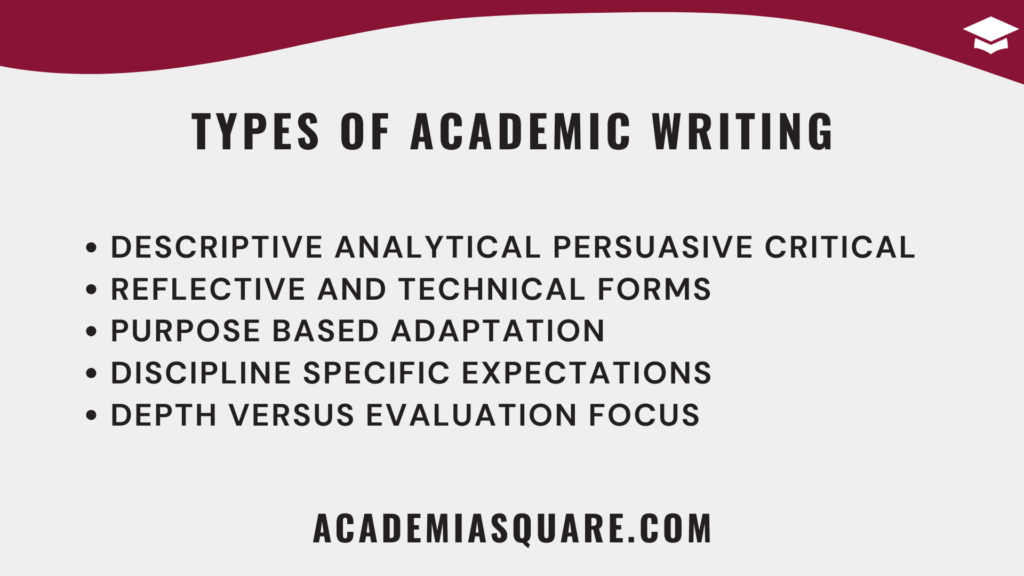
There is no single form of academic writing. It encompasses several types, each with a distinct purpose, structure, and level of critical engagement. Recognizing these categories helps writers choose the right tone and format for their goals. From essays to research papers and reflective journals, each type serves a unique academic function while following shared principles of clarity, evidence, and precision.
- 📖 Descriptive vs. Analytical Writing: Research by Lea and Street (1998, Studies in Higher Education) revealed that students often struggle to move from descriptive to analytical writing without explicit guidance and modeling.
- 📊 Persuasive and Critical Writing: A study in Assessing Writing (2018) found that teaching argumentative writing frameworks improves logical reasoning and citation quality by 30%.
- 🧩 Reflective Writing: Moon (2006, Reflective Practice in Learning) demonstrated that structured reflection deepens conceptual understanding and enhances self-assessment accuracy.
- 🎯 Discipline-Based Writing Forms: Research from the University of Edinburgh (2021) confirmed that tailoring writing approaches to disciplinary norms improves academic assessment outcomes and readability.
- 📚 Genre Awareness: Hyland (2009, Journal of English for Academic Purposes) showed that explicit instruction in academic genres increases rhetorical flexibility and writing performance across contexts.
Descriptive Academic Writing
Descriptive writing focuses on presenting facts, data, or concepts without deep interpretation. It is often used in reports, summaries, or background sections of essays. Its main goal is to convey information accurately and concisely. For instance, a lab report might describe a scientific procedure or outcome without analyzing its implications. While seemingly simple, descriptive writing requires accuracy and clarity to ensure that information is correctly understood.
Analytical Academic Writing
Analytical writing goes beyond description to examine how ideas or components relate to one another. It is common in literature reviews and comparative essays. Analytical writing helps uncover patterns, relationships, and causes. Educational research suggests that analytical tasks enhance critical thinking because they require breaking down information and assessing it from multiple perspectives.
- Identify relationships: Explore how theories, concepts, or data sets interact.
- Use evidence: Support every observation with credible academic sources.
- Draw logical conclusions: Show how your analysis leads to deeper understanding.
Persuasive Academic Writing
Persuasive writing aims to convince readers of a specific argument or interpretation. It is the most common form found in essays, dissertations, and journal articles. Persuasive writing integrates critical analysis with evidence-based reasoning. The writer evaluates multiple viewpoints but advocates for one position through structured argumentation. Studies in composition pedagogy show that students who master persuasive writing demonstrate stronger reasoning and analytical abilities across disciplines.
Critical Academic Writing
Critical writing represents the highest level of academic engagement. It not only analyzes existing knowledge but questions assumptions and generates original insights. Critical writers evaluate strengths and weaknesses in arguments, methodologies, and interpretations. This type of writing demonstrates intellectual independence and contributes new perspectives to academic conversations. It is often used in postgraduate research, journal publications, and theoretical discussions.
Specialized and Reflective Forms
Other forms of academic writing include reflective essays, case studies, and technical reports. Reflective writing focuses on personal learning experiences while maintaining analytical depth. Case studies blend descriptive and analytical approaches to explore real-world applications. Technical reports, on the other hand, emphasize accuracy, data presentation, and professional formatting. Choosing the appropriate form depends on your discipline, audience, and objectives.
By understanding the various types of academic writing, students and researchers can adapt their tone, structure, and purpose to suit specific tasks. Each form cultivates a different dimension of scholarly communication, reinforcing the versatility and depth that define effective academic writing.
The Structure of an Academic Paper
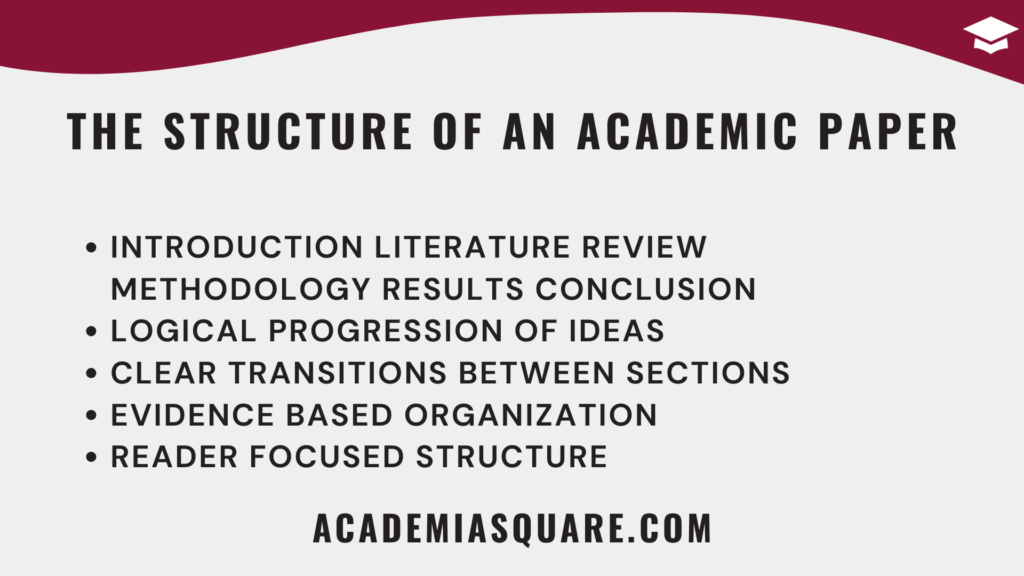
Every piece of academic writing follows a logical structure that guides the reader from context to conclusion. This structure is not arbitrary but rooted in centuries of scholarly practice designed to present ideas clearly and systematically. A well-organized paper allows readers to follow the progression of thought, evaluate arguments, and verify findings. Whether you are writing an essay, a journal article, or a research report, structure is the backbone that gives your work coherence and authority.
Introduction
The introduction establishes the topic, provides background information, and outlines the purpose or thesis statement. It sets expectations for what the paper will explore and why it matters. According to research in writing pedagogy, introductions that clearly define the research question or argument increase reader engagement and comprehension. The introduction is your opportunity to situate your work within a broader academic conversation, highlighting its relevance and originality.
- Start with context: Give readers a sense of the problem or issue being examined.
- State your purpose: Clearly identify your main argument or hypothesis.
- Preview structure: Briefly explain how the paper will unfold.
Literature Review
The literature review summarizes existing research and demonstrates your understanding of key theories and debates. It connects your work to what has already been published and identifies gaps that your study will address. Academic writing in this section should be analytical, not merely descriptive. Instead of listing sources, synthesize them to show trends, contradictions, or developments in the field. Studies in educational psychology highlight that literature reviews improve critical thinking by requiring evaluation of multiple perspectives.
Methodology
This section explains how you conducted your research or analysis. It outlines methods, materials, participants, and procedures so that others can replicate or evaluate your approach. Transparency is central to scientific and academic credibility. When describing methods, maintain clarity and precision, avoiding unnecessary detail that does not affect interpretation. Methodology also includes justification for chosen approaches, linking them to theoretical or practical reasoning.
Analysis and Discussion
In most academic papers, analysis and discussion form the core of your argument. This is where data, interpretation, and reasoning intersect. Present results logically and connect them to your thesis or research question. The discussion should interpret findings, explain their significance, and relate them to previous work. Research in composition studies shows that papers with structured analytical discussions achieve higher clarity and impact because they integrate evidence with insight.
Conclusion
The conclusion summarizes key findings and reinforces the main argument without repeating earlier content. It should reflect on broader implications, limitations, and potential directions for future research. Effective conclusions leave the reader with a clear understanding of what was learned and why it matters. Academic writing experts often emphasize that the conclusion is not an afterthought but a synthesis of the intellectual journey presented in the paper.
Mastering the structure of an academic paper ensures logical progression, clarity of argument, and scholarly professionalism. A well-structured work does not simply inform—it persuades, demonstrates expertise, and invites further dialogue within the academic community.
Research and Source Evaluation
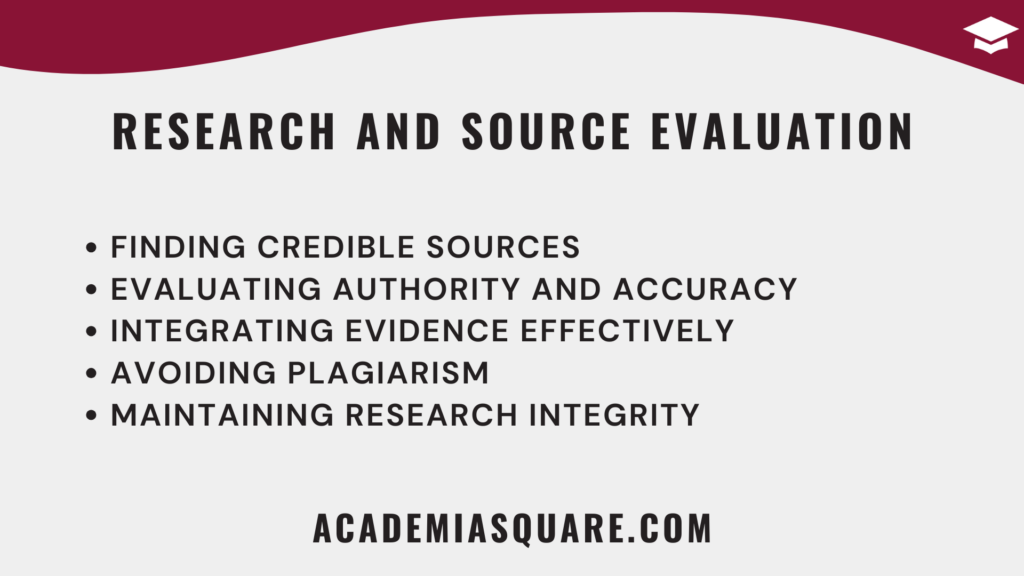
High-quality academic writing depends on strong research and critical evaluation of sources. Academic work is only as reliable as the evidence it presents. Therefore, learning how to locate, assess, and integrate credible sources is an essential skill for any scholar. Effective research builds authority, supports arguments, and connects your ideas to the wider academic conversation. Without this foundation, writing risks being unsubstantiated or biased.
Finding Reliable Sources
The first step in research is identifying where to look. Academic databases such as JSTOR, Google Scholar, and Scopus contain peer-reviewed journals and scholarly books that have undergone expert evaluation. Library resources and institutional repositories are also vital. Avoid unverified websites or commercial blogs, which may contain inaccuracies. According to information literacy studies, students who rely on peer-reviewed material demonstrate higher levels of analytical reasoning and academic success.
- Use academic databases: Start your search with reputable scholarly sources.
- Check publication credibility: Prefer works published by recognized academic presses or journals.
- Evaluate the author’s credentials: Expertise and institutional affiliation matter.
Evaluating Source Quality
Not all sources are equally valuable. Critical evaluation ensures that evidence supports your arguments accurately and ethically. Consider relevance, accuracy, currency, and objectivity. A reliable source presents verifiable data, balanced reasoning, and proper citations. Research from the Association of College and Research Libraries (ACRL) emphasizes that evaluating authority and bias in sources strengthens academic integrity and reduces misinformation.
One useful strategy is the CRAAP test—an acronym for Currency, Relevance, Authority, Accuracy, and Purpose. Applying this checklist helps you filter out weak or misleading materials. This method is widely used in academic institutions to teach source evaluation skills.
Integrating Research into Writing
After selecting quality sources, integrate them smoothly into your work. Use quotations sparingly and paraphrase to demonstrate understanding. Always connect external evidence to your central argument rather than allowing it to stand alone. Effective integration transforms your paper from a summary of others’ ideas into a cohesive and original argument supported by credible evidence.
Signal phrases such as “According to Smith (2020)” or “Research shows that…” help attribute information clearly. Always balance direct citations with your analysis, explaining how the evidence supports or contrasts with your own reasoning.
Avoiding Plagiarism and Maintaining Integrity
Proper citation is essential in maintaining academic honesty. Plagiarism, even when unintentional, undermines credibility and ethical standards. Using established citation formats like APA, MLA, or Chicago ensures transparency and allows readers to verify your claims. Studies in higher education consistently show that students who receive formal training in citation and referencing produce more coherent and trustworthy work.
Thorough research and rigorous source evaluation give academic writing its strength and validity. By mastering how to identify, assess, and integrate credible sources, you build a foundation for analysis that is both intellectually and ethically sound. The result is writing that not only informs but also contributes meaningfully to the academic community.
Academic Writing Style and Tone
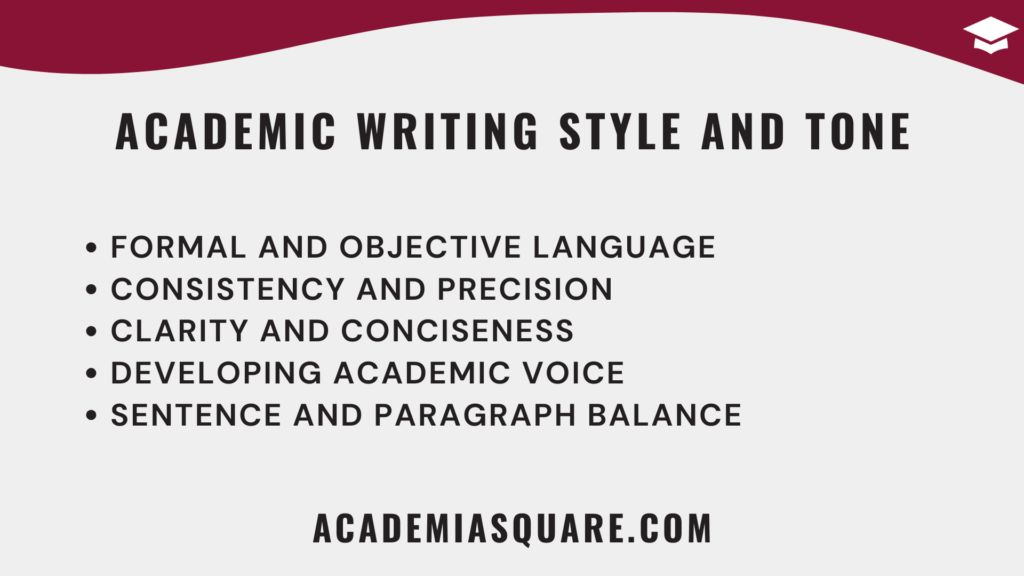
The style and tone of academic writing determine how effectively your message is communicated and received. A consistent academic style conveys professionalism, precision, and respect for the reader’s intelligence. It reflects your ability to present complex ideas in a formal and objective manner. While different disciplines may have variations in style, the underlying principles—clarity, coherence, and objectivity—remain the same.
Formal and Objective Language
Academic writing avoids conversational expressions and emotional language. Instead, it uses formal vocabulary that reflects accuracy and seriousness. Objectivity means focusing on facts, logic, and evidence rather than personal opinions. Studies on academic literacy show that readers perceive arguments as more credible when writers maintain a detached, neutral tone supported by verifiable information.
- Avoid slang or contractions: Replace informal terms with precise, professional alternatives.
- Be impartial: Present multiple perspectives before drawing conclusions.
- Use third-person pronouns: It keeps the focus on ideas rather than individuals.
Clarity and Conciseness
Clarity in academic writing comes from direct sentence construction and logical sequencing. Each paragraph should convey a single main idea that supports the thesis. Conciseness means avoiding unnecessary words and redundancy. Research on reader comprehension shows that shorter, well-structured sentences improve understanding and retention. Writers should balance sophistication of thought with simplicity of expression, ensuring accessibility without sacrificing depth.
One practical approach to achieving clarity is to revise every paragraph with these questions in mind: “Is this sentence essential?” and “Does it contribute directly to my argument?” Removing filler words and redundant phrasing enhances both flow and impact.
Consistency in Terminology and Tense
Consistency builds trust. Academic writing should maintain uniformity in tense, terminology, and citation style. For example, in research papers, the present tense is used for general truths and the past tense for reporting findings. Consistent terminology ensures precision, especially in technical or theoretical subjects. Inconsistent phrasing confuses readers and weakens the sense of authority in your argument.
Developing Academic Voice
Every scholar develops a unique academic voice that balances confidence with humility. A strong voice emerges through critical engagement, measured language, and clear reasoning. Avoid exaggeration or absolute claims such as “always,” “never,” or “proves,” which can sound unscientific. Instead, use cautious but assertive expressions like “the evidence suggests” or “this study indicates.” This rhetorical balance demonstrates maturity and respect for academic dialogue.
Effective Sentence and Paragraph Structure
Academic paragraphs typically begin with a topic sentence followed by supporting evidence and analysis. Sentences should be varied in length to maintain rhythm and interest. Too many long sentences can make writing dense, while too many short ones can make it sound mechanical. Read your work aloud to ensure natural flow and logical transitions. This simple practice, recommended by many writing experts, helps identify awkward phrasing and improve tone consistency.
Adopting a refined and objective academic writing style allows you to communicate ideas with authority and clarity. It builds trust with readers, reinforces professionalism, and positions your work within the broader scholarly community.
Cohesion, Coherence, and Argumentation
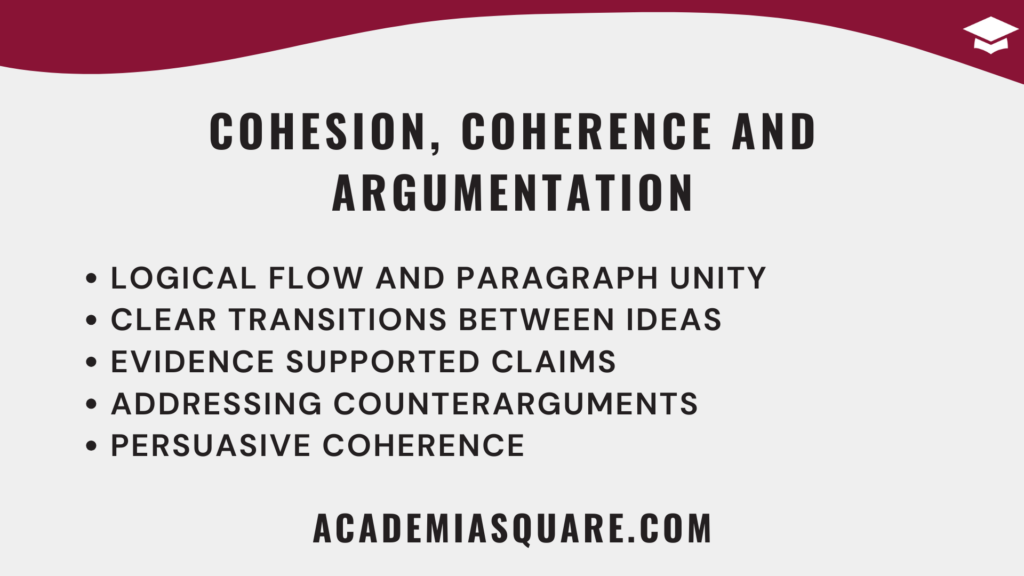
While style governs how ideas are expressed, cohesion and coherence determine how ideas connect. In academic writing, these elements transform individual paragraphs into a unified argument that flows logically from beginning to end. A paper that lacks coherence can appear fragmented even if the ideas themselves are strong. Understanding how to structure argumentation and maintain flow ensures that readers follow and believe your reasoning.
Building Logical Flow
Cohesion refers to how sentences and paragraphs link together through grammatical and lexical connections. Coherence focuses on the logical relationship between ideas. Together, they make the text feel continuous and purposeful. Techniques such as transition words (“however,” “in addition,” “therefore”) and consistent topic sentences help create this connection. Research in discourse analysis demonstrates that texts with strong cohesion are easier to follow and remember because they mirror natural cognitive patterns of understanding.
- Use transitions strategically: Guide readers through shifts in argument or evidence.
- Link back to your thesis: Each paragraph should reinforce or expand the central idea.
- Vary connectors: Avoid repetitive transitions to maintain an engaging rhythm.
Developing Strong Argumentation
Argumentation is the heart of academic writing. It involves presenting a claim, supporting it with evidence, and addressing counterarguments. A strong argument is both logical and supported by reliable data. Studies on academic reasoning indicate that writers who engage critically with opposing views produce more balanced and persuasive work. The goal is not to dominate the discussion but to contribute meaningfully to it through reasoned analysis.
To construct effective arguments, follow a simple three-part model: claim, evidence, and explanation. The claim states your point, the evidence supports it, and the explanation links it back to your central thesis. Each paragraph should reflect this miniature argument structure.
Paragraph Unity and Progression
Each paragraph in academic writing should focus on one main idea that contributes to the overall argument. Begin with a clear topic sentence and end with a concluding sentence that reinforces the point or transitions smoothly to the next section. Logical progression between paragraphs can be achieved through thematic connections or chronological order. Academic writing experts emphasize that unity and flow make complex arguments accessible and convincing.
Addressing Counterarguments
A well-rounded argument acknowledges alternative perspectives. Addressing counterarguments shows intellectual honesty and deep understanding of the subject. Rather than ignoring opposing views, analyze them critically and explain why your perspective remains valid. This strengthens credibility and demonstrates your capacity for balanced reasoning—a quality highly valued in academic discourse.
Maintaining Persuasive Coherence
Persuasion in academic writing comes from clarity and logic, not emotional appeal. Coherent arguments present evidence methodically, guiding readers to inevitable conclusions. Use signposting phrases such as “This suggests that…” or “A key implication of this finding is…” to help readers navigate complex reasoning. Linguistic research has found that such signaling devices significantly improve reader comprehension and perceived authority of the text.
Achieving cohesion, coherence, and strong argumentation turns writing into structured reasoning rather than isolated information. By linking ideas purposefully and supporting every claim with analysis, you craft academic work that is not only informative but intellectually compelling.
Citation and Referencing Systems
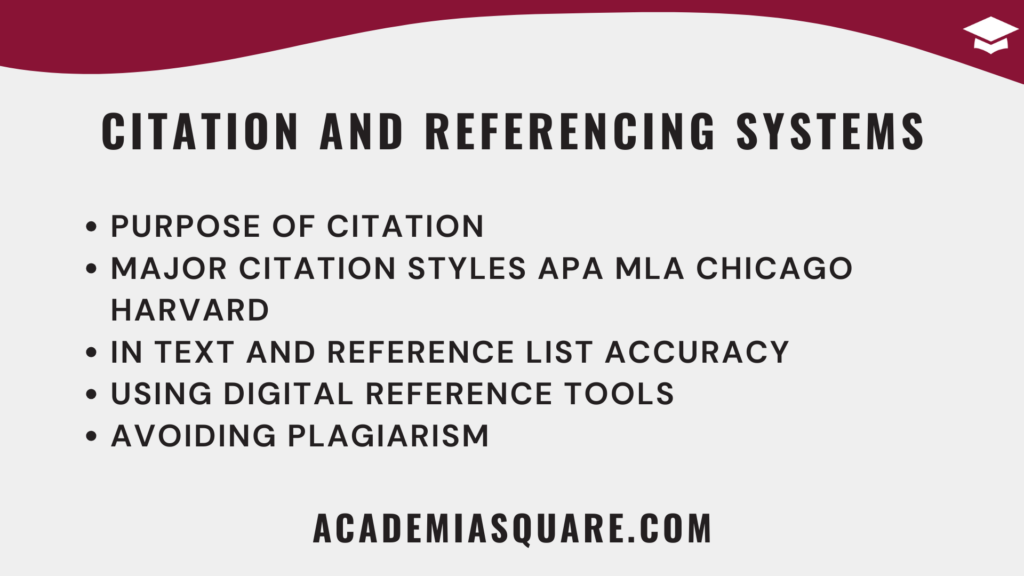
Every credible piece of academic writing depends on accurate citation and referencing. Proper citation not only acknowledges the intellectual contributions of others but also strengthens your credibility as a scholar. It allows readers to trace your sources, verify your evidence, and engage with the same materials you used. Referencing is more than a formality; it is a cornerstone of academic integrity and a defining feature of scholarly communication.
The Purpose of Citation
Citing sources demonstrates transparency and respect for intellectual property. It shows that your claims are grounded in existing research and that you are contributing to an ongoing academic dialogue rather than presenting ideas in isolation. Studies from the American Psychological Association (APA) highlight that accurate referencing enhances both the reliability and readability of scholarly work because it provides a clear trail of evidence for every assertion.
- Give credit: Acknowledge the authors and researchers whose work supports your arguments.
- Provide evidence: Citations validate claims and make arguments more persuasive.
- Enable verification: Readers can locate your sources and assess their credibility.
Major Citation Styles
Different disciplines follow specific citation systems, each with its own conventions for formatting references and in-text citations. The most widely used include:
APA (American Psychological Association): Common in social sciences, emphasizing date and author to reflect research currency.
MLA (Modern Language Association): Used primarily in humanities, focusing on author and page number for textual analysis.
Chicago Style: Preferred in history and some social sciences, offering two systems—notes-bibliography and author-date.
Harvard Style: Popular in international academic contexts, using author-date references similar to APA but with slight variations.
Choosing the correct format depends on the requirements of your institution, publication, or discipline. Consistency is essential—mixing citation styles can confuse readers and reduce professional polish.
In-Text Citations and Reference Lists
In-text citations attribute ideas within your writing, while reference lists provide full bibliographic details at the end of your paper. Each citation should match an entry in the reference list, ensuring transparency. When quoting directly, always include page numbers. Paraphrased information also requires citation, as it still reflects someone else’s intellectual effort. Maintaining this accuracy not only upholds ethical standards but also demonstrates meticulous scholarship.
Using Digital Tools for Referencing
Modern writers can simplify citation management with digital tools such as Zotero, Mendeley, or EndNote. These programs organize references, generate citations automatically, and ensure consistency across drafts. Research from university writing centers shows that using citation managers reduces errors and saves time, especially in long papers or collaborative projects.
Avoiding Plagiarism
Plagiarism, whether deliberate or accidental, violates academic ethics and can have serious consequences. It involves presenting others’ ideas or words as your own without proper acknowledgment. To avoid it, always cite sources when you paraphrase, summarize, or quote. Universities worldwide use plagiarism detection software such as Turnitin to ensure academic honesty. Following citation guidelines and maintaining detailed notes from the start of your research helps prevent accidental plagiarism.
Proper referencing transforms a paper from a personal statement into a verifiable piece of academic work that others can trust and build upon.
Common Challenges in Academic Writing
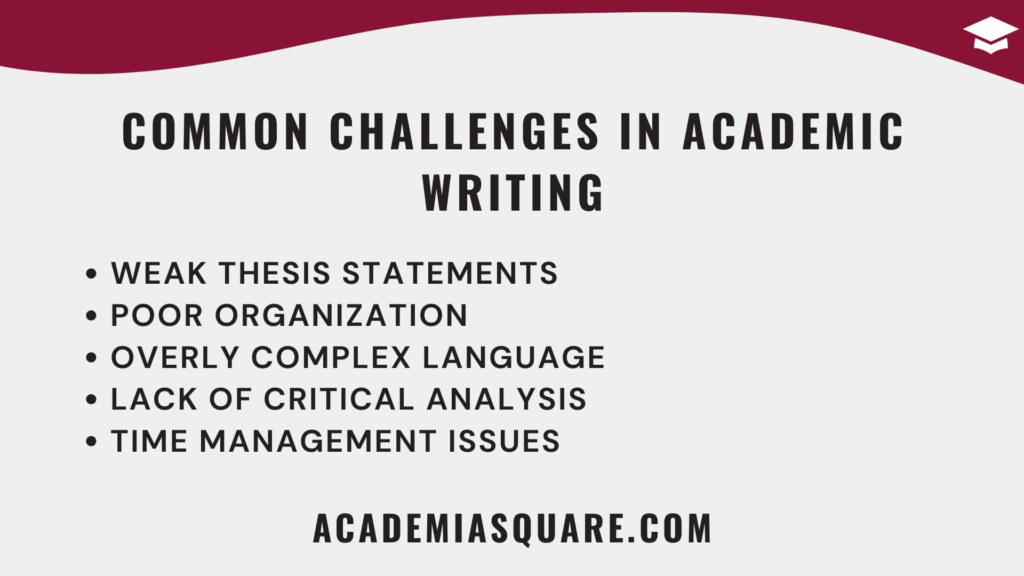
Even experienced students and researchers encounter difficulties in academic writing. The process demands critical thinking, organization, and clarity, all while adhering to scholarly conventions. Recognizing common challenges early can help you address them strategically and strengthen your writing. Most issues arise not from lack of knowledge, but from habits, time pressure, or limited feedback during the writing process.
Weak Thesis Statements
A thesis statement is the foundation of any academic paper. When it is vague, overly broad, or unfocused, the entire structure suffers. A strong thesis clearly defines your position and guides every section of your paper. Writing experts suggest that revising your thesis after drafting helps align it with the evidence and arguments you actually present. A good thesis answers a specific question and signals to readers what to expect.
- Be specific: Avoid general statements; focus on one central argument.
- Be arguable: Express a position that invites evidence and discussion.
- Be clear: Make sure your claim can be understood in one concise sentence.
Poor Structure and Organization
Disorganized writing makes it difficult for readers to follow your reasoning. Common issues include missing transitions, unrelated paragraphs, or repetition. The solution lies in planning and outlining before writing. Cognitive studies show that structured planning reduces cognitive load, allowing you to focus on refining content rather than remembering what to write next. Using clear headings and topic sentences helps readers navigate your argument smoothly.
Overly Complex Language
Many writers mistakenly believe that complicated vocabulary makes writing sound more academic. In reality, excessive jargon or convoluted phrasing can obscure meaning. Strive for simplicity without losing depth. Research from the Plain Language Association indicates that clarity improves reader trust and comprehension. The best academic writing is sophisticated in thought, not in unnecessary complexity.
Lack of Critical Analysis
Summarizing sources without analysis is one of the most common pitfalls. Academic writing requires engagement with ideas, not mere reporting. Critical analysis means questioning assumptions, comparing perspectives, and evaluating evidence. It transforms a summary into a scholarly argument. To strengthen critical depth, always ask: “What does this mean?”, “Why is it important?”, and “How does it support my thesis?”
Time Management and Procrastination
Writing under pressure often leads to poor quality work. Procrastination can result from perfectionism, fear of failure, or lack of structure. Techniques like time blocking or the Pomodoro method can help maintain focus. Educational psychology research confirms that consistent short writing sessions produce higher-quality work than last-minute efforts. Treat writing as a process of gradual refinement, not a single task to be completed in one sitting.
Insufficient Proofreading and Editing
Errors in grammar, punctuation, and formatting can undermine even the strongest arguments. Always allocate time for revision and proofreading. Reading aloud helps catch awkward phrasing and inconsistencies. Online tools such as Grammarly or Hemingway can assist, but manual review remains irreplaceable for academic tone and accuracy. Many universities recommend peer review as part of the editing process, as a second reader can catch issues you may overlook.
By identifying and addressing these common challenges in academic writing, you enhance clarity, strengthen arguments, and ensure that your work reflects the precision and integrity expected in scholarly communication. Every challenge is an opportunity to refine both your thinking and your expression.
The Writing Process: From Planning to Revision
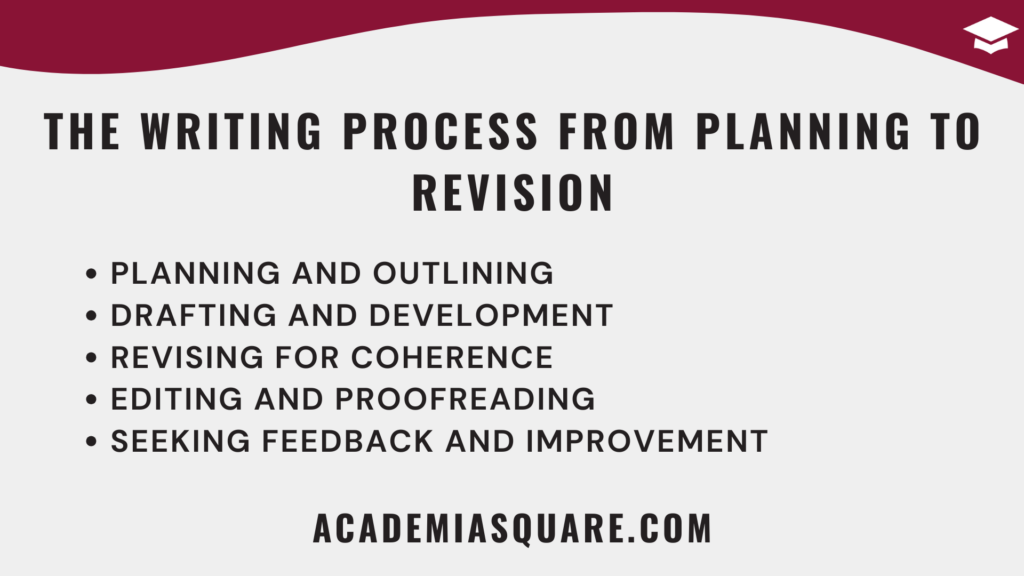
Successful academic writing is not a single act of inspiration but a systematic process of development. Each stage—planning, drafting, revising, and editing—builds on the previous one. Following a structured writing process helps you stay organized, reduce stress, and produce clearer, more persuasive work. Research in composition studies confirms that writers who engage in multiple drafts demonstrate better critical thinking and produce higher-quality academic papers.
Planning and Outlining
Before writing, define your purpose, identify your audience, and establish your main argument. Planning ensures that every part of your work contributes to your overall objective. Outlining is a powerful organizational tool that turns abstract ideas into a logical sequence. It provides a roadmap for your argument and prevents aimless writing. Studies in educational psychology show that students who use detailed outlines spend less time revising because their ideas are already well-structured.
- Define your objective: Clarify what question your paper seeks to answer.
- Create a working thesis: Formulate a preliminary argument to guide research.
- Map your structure: Divide your work into clear sections before drafting.
Drafting and Development
Once your outline is complete, begin drafting without aiming for perfection. The goal is to translate your ideas into text while maintaining momentum. Academic writing benefits from progressive refinement—each draft should improve organization, coherence, and evidence integration. Avoid editing too early; instead, focus on getting your ideas down clearly. Writing researchers describe this phase as “thinking on paper,” where drafting becomes part of your intellectual exploration.
Revising for Content and Coherence
Revision is the heart of academic writing. It goes beyond correcting grammar—it involves rethinking arguments, restructuring paragraphs, and ensuring logical progression. Good writers often rewrite entire sections to strengthen clarity or refine evidence. A study from the Journal of Writing Research found that iterative revision significantly improves the overall quality and persuasiveness of academic work. Always revisit your thesis to ensure it aligns with your evidence and conclusions.
Editing and Proofreading
Editing focuses on improving sentence structure, vocabulary, and tone, while proofreading eliminates surface-level errors. Both are essential for producing professional writing. Reading your text aloud or using text-to-speech tools helps identify awkward phrasing or unclear sentences. Additionally, checking for consistent formatting and proper citation ensures academic credibility. Many scholars recommend taking short breaks between writing and editing sessions to maintain objectivity.
Seeking Feedback
Peer review is an integral part of academic culture. Sharing drafts with colleagues, supervisors, or writing tutors provides new perspectives and highlights areas that may need improvement. Feedback should be viewed as collaboration rather than criticism—it strengthens both your argument and your writing confidence. The process of incorporating constructive feedback encourages growth and deeper understanding of your subject.
Embracing the full writing process transforms academic work into a deliberate act of refinement and discovery. Each stage enhances precision, coherence, and clarity, ensuring your ideas are presented with the authority and polish that define successful scholarship.
Enhancing Clarity and Precision in Academic Writing
Clarity and precision are the hallmarks of strong academic writing. They allow complex ideas to be communicated with accuracy and confidence. When writing lacks clarity, even the most profound arguments lose their power. Precision ensures that readers interpret your meaning exactly as intended. Together, they form the foundation of effective scholarly communication, enabling your work to be understood and trusted by others.
Choosing the Right Words
Word choice shapes the reader’s understanding and perception of your expertise. Avoid vague terms such as “a lot,” “thing,” or “good,” which weaken impact. Instead, use specific and measurable language. Linguistic studies on readability show that precise vocabulary increases comprehension and retention. Replace abstract generalities with concrete details that convey depth and clarity. A rich but controlled vocabulary demonstrates intellectual maturity without overwhelming the reader.
- Prefer accuracy over elegance: Use words that convey meaning directly.
- Eliminate ambiguity: Replace imprecise language with clear alternatives.
- Check definitions: Use technical terms correctly and consistently.
Structuring Sentences for Impact
Sentence structure affects how easily information is processed. Long, complex sentences can obscure meaning, while overly short ones can sound abrupt. The key is balance. Combine variety in sentence length with clear syntax. Each sentence should convey one idea logically connected to the next. Educational linguistics research indicates that readers prefer moderately complex sentences when transitions and conjunctions are used effectively.
Eliminating Redundancy
Repetition and unnecessary words dilute meaning. For instance, phrases like “in order to” can be simplified to “to,” and “due to the fact that” to “because.” Every word in an academic paper should serve a purpose. Editing for conciseness not only reduces word count but also strengthens argumentation. Clarity emerges when each sentence contributes directly to advancing your ideas.
Ensuring Logical Consistency
Precision is not only linguistic but conceptual. Consistency in terminology, units of measurement, and theoretical definitions prevents confusion. Always verify that your evidence aligns with your claims and that transitions between paragraphs are logical. Consistent use of formatting, symbols, and abbreviations also improves readability. The reader should never have to guess your meaning or intent.
Using Visual Clarity
Tables, charts, and diagrams can enhance understanding when used appropriately. Visual elements should simplify—not complicate—your data presentation. Label figures clearly, include units of measurement, and reference them accurately in your text. Research in cognitive psychology suggests that visuals improve memory recall and comprehension when they complement the written explanation rather than duplicate it.
By enhancing clarity and precision, academic writers make their ideas accessible, persuasive, and impactful. Precision ensures intellectual honesty, while clarity invites engagement, turning complex insights into meaningful contributions to scholarly dialogue.
Conclusion: Becoming a Skilled Academic Writer
Mastering academic writing is a journey that transforms both your communication skills and your way of thinking. It requires patience, discipline, and reflection, but the rewards extend far beyond the classroom. Through structured writing, you learn to think critically, reason logically, and express ideas that contribute to human knowledge. Each paper becomes a record of intellectual growth and analytical refinement.
Developing Lifelong Writing Habits
Consistent practice is the key to improvement. Set realistic goals for daily or weekly writing and commit to regular revision. Research on skill acquisition shows that deliberate practice—focused, feedback-driven improvement—is far more effective than occasional effort. Over time, writing evolves from a task into a professional habit that sharpens analytical and creative thinking alike.
Embracing Reflection and Adaptation
Skilled academic writers continually evaluate their methods and adapt to new challenges. Reflection after each writing project helps identify strengths and areas for improvement. This self-awareness builds confidence and fosters intellectual independence. The most respected scholars are those who view writing as a process of lifelong learning rather than a fixed skill.
Contributing to the Academic Community
Effective writing allows your ideas to join larger academic conversations. When you cite sources, respond to existing research, and publish findings, you participate in the collective pursuit of knowledge. Academic writing becomes not only a personal skill but a social and ethical responsibility—one that preserves the integrity and progress of scholarship worldwide.
- Engage with peers: Collaboration and peer review enhance perspective.
- Stay informed: Reading widely across disciplines enriches your voice.
- Continue improving: Treat every draft as a step toward mastery.
Becoming a skilled academic writer is about more than producing polished papers. It is about cultivating precision of thought, ethical integrity, and a genuine curiosity for knowledge. Each sentence you craft becomes part of the shared conversation of scholarship. With dedication, openness to feedback, and respect for evidence, you can develop a voice that informs, persuades, and inspires within the global academic community.
Sources and Recommended Reading on Academic Writing
- Thonney, Teresa. Academic Writing: Concepts and Connections. Oxford University Press, 2014.
- Savage, Alice & Mayer, Patricia. Effective Academic Writing (2nd Ed.). Oxford University Press.
- Kaufhold, Katharina & Reinboth, Marcus. “The dynamics of building academic writing knowledge in peer collaboration.” Computers in Human Behavior, 2025.
- Kaufhold, Katharina. “The dynamics of building academic writing knowledge in discipline-specific writing tasks.” Journal of Writing Research, 2025.
- Journal of Writing Research. “Clarity, structure, and comprehension in academic communication.” Cambridge University Press, 2022.
- Kellogg, Ronald T. “Training writing skills: A cognitive developmental perspective.” Written Communication, 1988.
- Wingate, Ursula. “Using academic writing to enhance student learning.” Teaching in Higher Education, 2012.
- Coxhead, Averil. “A New Academic Word List.” TESOL Quarterly, 2000.
- Negretti, Raffaella & Kuteeva, Maria. “Fostering metacognitive genre awareness in academic writing.” Journal of English for Academic Purposes, 2011.
- Hyland, Ken. Disciplinary Discourses: Social Interactions in Academic Writing. Routledge, 2004.
- Sweetland Center for Writing, University of Michigan. “Disciplinary writing and conventions.”
- Petrić, Bojana & Harwood, Nigel. “Instruction in source integration and plagiarism prevention.” Journal of Second Language Writing, 2019.
- Lea, Mary R. & Street, Brian V. “Student writing in higher education: An academic literacies approach.” Studies in Higher Education, 1998.
- Bacha, Nahla N. “Developing argumentation in academic writing through genre-based pedagogy.” Assessing Writing, 2018.
- Moon, Jennifer. Learning Journals and Reflective Practice in Higher Education. Routledge, 2006.
- University of Edinburgh. “Developing academic writing in doctoral research.” University of Edinburgh, 2021.
- Hyland, Ken. “Academic discourse and genre awareness.” Journal of English for Academic Purposes, 2009.
- AcademiaSquare. “How to Read Critically: Essential Skills for Effective Comprehension and Analysis.”
- AcademiaSquare. “SQ3R Method: How to Master Active Reading and Boost Your Retention.”
FAQs on Academic Writing
What is academic writing?
Academic writing is a formal, evidence-based style of communication used in universities and research institutions. It emphasizes clarity, precision, and logical structure to present and defend ideas. According to the American Psychological Association (APA), academic writing promotes transparency, critical thinking, and reproducibility of knowledge.
Why is academic writing important?
Academic writing is essential because it allows researchers and students to communicate complex ideas effectively and ethically. It fosters analytical thinking and contributes to scholarly dialogue. Studies in educational psychology show that students who develop strong academic writing skills perform better in reasoning and problem-solving tasks across disciplines.
What are the main types of academic writing?
The four primary types of academic writing are descriptive, analytical, persuasive, and critical. Each serves a different purpose—from presenting information to analyzing, arguing, or evaluating evidence. According to the University of Sydney, understanding these types helps writers adapt their tone and structure for different academic tasks.
How is academic writing different from other forms of writing?
Academic writing differs from creative or journalistic writing in tone, purpose, and structure. It is formal, objective, and based on verified evidence. Unlike other styles, academic writing prioritizes logic and precision over emotional appeal or personal storytelling.
What makes a good academic writing style?
A good academic writing style is clear, concise, and coherent. It uses formal vocabulary, avoids bias, and follows a logical flow. Research by the University of Leicester highlights that strong academic writing combines objectivity with analytical reasoning, supported by credible evidence and consistent citation.
What is the structure of an academic paper?
Most academic papers follow a structured format: introduction, literature review, methodology, results/discussion, and conclusion. This structure ensures logical progression and readability. Research in educational design shows that structured writing improves comprehension and engagement for readers.
How can I make my academic writing more precise?
Precision in academic writing comes from choosing accurate terms, defining key concepts, and avoiding vague language. Use discipline-specific vocabulary and eliminate redundancy. Linguistic studies show that concise writing improves credibility and reader trust in academic work.
What is academic integrity in writing?
Academic integrity refers to honesty and transparency in scholarly communication. It requires proper citation of sources, originality of ideas, and avoidance of plagiarism. The International Center for Academic Integrity defines it as a commitment to fairness, trust, and ethical scholarship.
How do I avoid plagiarism in academic writing?
To avoid plagiarism, always cite your sources, use quotation marks for direct quotes, and paraphrase ideas responsibly. Keeping thorough research notes also prevents accidental misuse of others’ work. Universities recommend referencing systems like APA or MLA for consistent and transparent acknowledgment of sources.
Why are citations important in academic writing?
Citations strengthen academic writing by showing that claims are supported by credible evidence. They also acknowledge intellectual contributions and prevent plagiarism. According to APA research guidelines, proper citation improves a writer’s academic credibility and encourages scholarly collaboration.
What are common mistakes in academic writing?
Frequent mistakes include weak thesis statements, poor structure, excessive jargon, and insufficient analysis. Research in higher education emphasizes that revision and feedback significantly reduce these errors. Developing strong planning habits helps prevent them from the start.
How does academic writing improve critical thinking?
Academic writing promotes critical thinking by requiring writers to analyze, evaluate, and synthesize information before forming conclusions. Studies by Dunlosky et al. (2013) in Learning and Instruction show that structured writing tasks enhance reasoning and long-term understanding.
How can I improve my academic writing skills?
Improving academic writing requires consistent practice, reading scholarly materials, and seeking feedback. Regular revision, attention to structure, and engagement with peer-reviewed research all strengthen skill development. Writing centers at major universities recommend iterative drafting as a proven method for growth.
What are the key characteristics of effective academic writing?
Effective academic writing is characterized by clarity, structure, objectivity, and evidence. It presents information logically, integrates credible sources, and maintains a formal tone. Research on writing pedagogy indicates that these features consistently correlate with higher academic performance and publication success.


